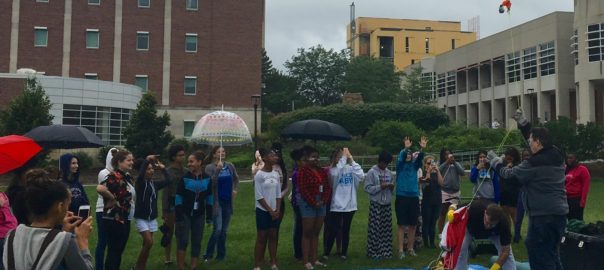This was the 8th year that Michael has helped with the EUREKA STEM camp with Girls Inc. at UNO. Participants at the camp learn about high altitude ballooning as a way to do science and culminates with a balloon flight that include their team experiments.
This year turned out to be challenging because of the weather. We were scheduled to fly on Wednesday morning (6/20/18). We were forced to cancel because it was pouring rain all morning and our flight path was passing over the airport at a fairly low altitude, something we must avoid.
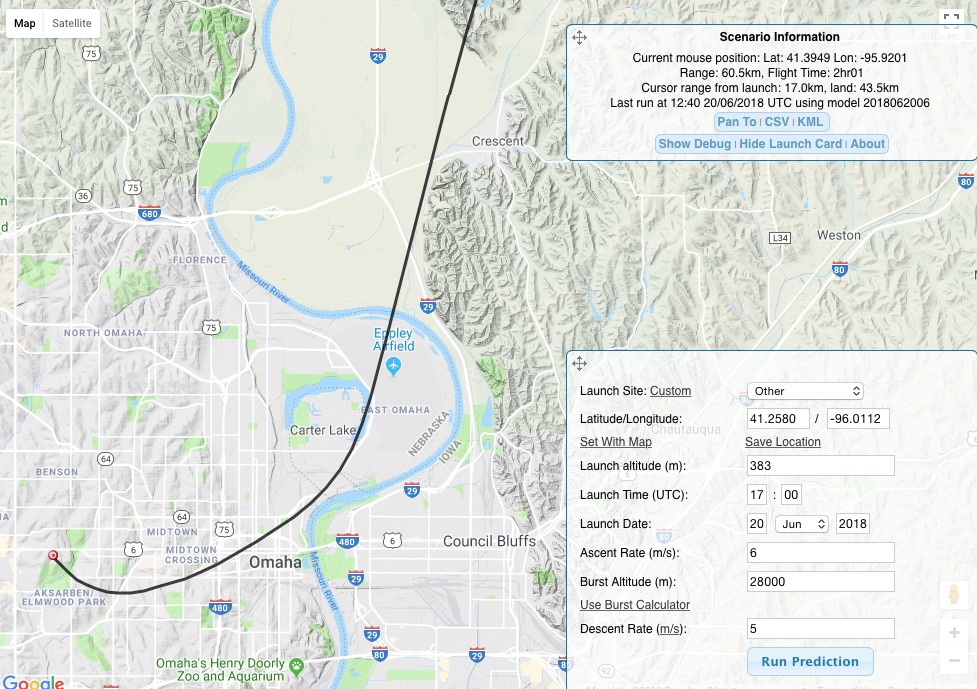
Our rain date was Thursday (6/21/18), but the forecast did not look much better in terms of rain. In addition, we had two different weather sources saying that the winds were going to be high (around 25 mph), which makes filling the balloon even tougher. Early in the morning on Thursday, the rain forecast changed from scattered thunderstorms to scattered showers to just cloudy and the wind forecast decreased considerably.
The rain showers died down by 10 am so we decided to prepare for the flight.

Michael briefed the participants about the launch procedures in the classroom and then went to retrieve the cylinders of helium. We ran into one more impediment when only one of the two ordered canisters had been delivered. We had a heavy string of pods that required the volume from both cylinders.
In engineering and space science, problems often arise and decisions must be made. We had three choices:
- Have someone retrieve the second cylinder of gas and be delayed by about an hour and a half. (This turned out not a viable choice because the girls were on a fairly tight schedule with other STEM activities during the camp. In addition, we had already started the tracking and we did not want to run into issues with battery life.)
- Accept defeat, cancel the flight, and do an alternative activity.
- Remove the two heaviest pods and fly with the helium from the single cylinder.
The girls voted on which option they wanted and they chose option number 3.
So, we took half of the experiment pods off the string and started the fill.





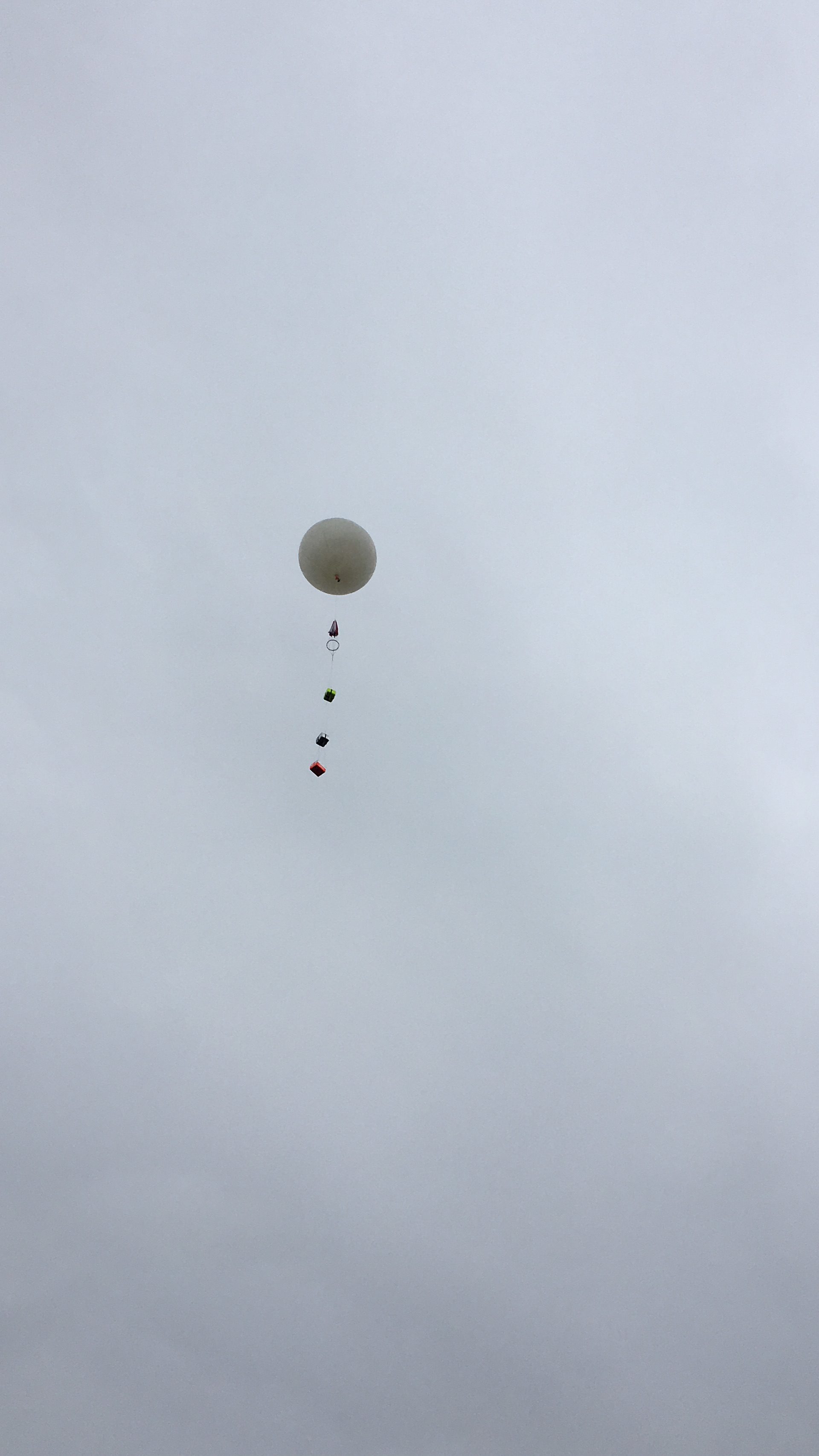
Our new flight prediction had us landing about 45 miles to the south rather than 40 miles to the north if we had flown the day before.
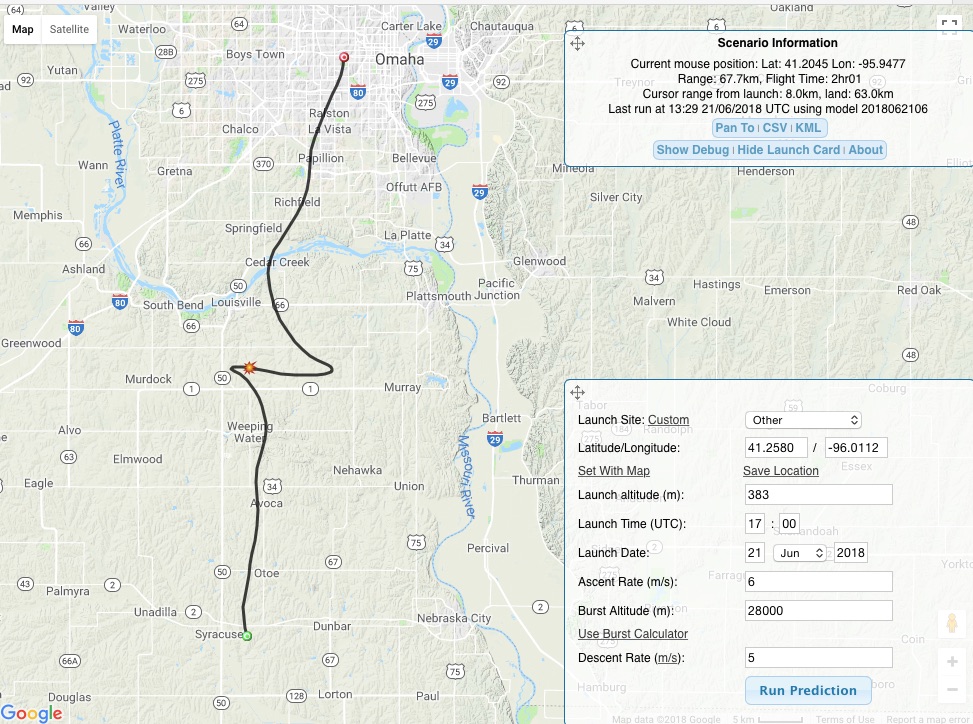
Because of the amount of helium we used, we didn’t quite get the amount of lift that we wanted so we expected the flight path to be a bit longer than our original prediction. We waited in Syracuse for a while and then traveled further south to Tecumseh, NE until we were able to get the landing coordinates. It landed about 4 miles to the north of where we were stationed.

The recovery was very easy. We were able to drive right up to the payloads near a grain loader. It almost made up for the difficulty of the chaotic lead-up to the launch.
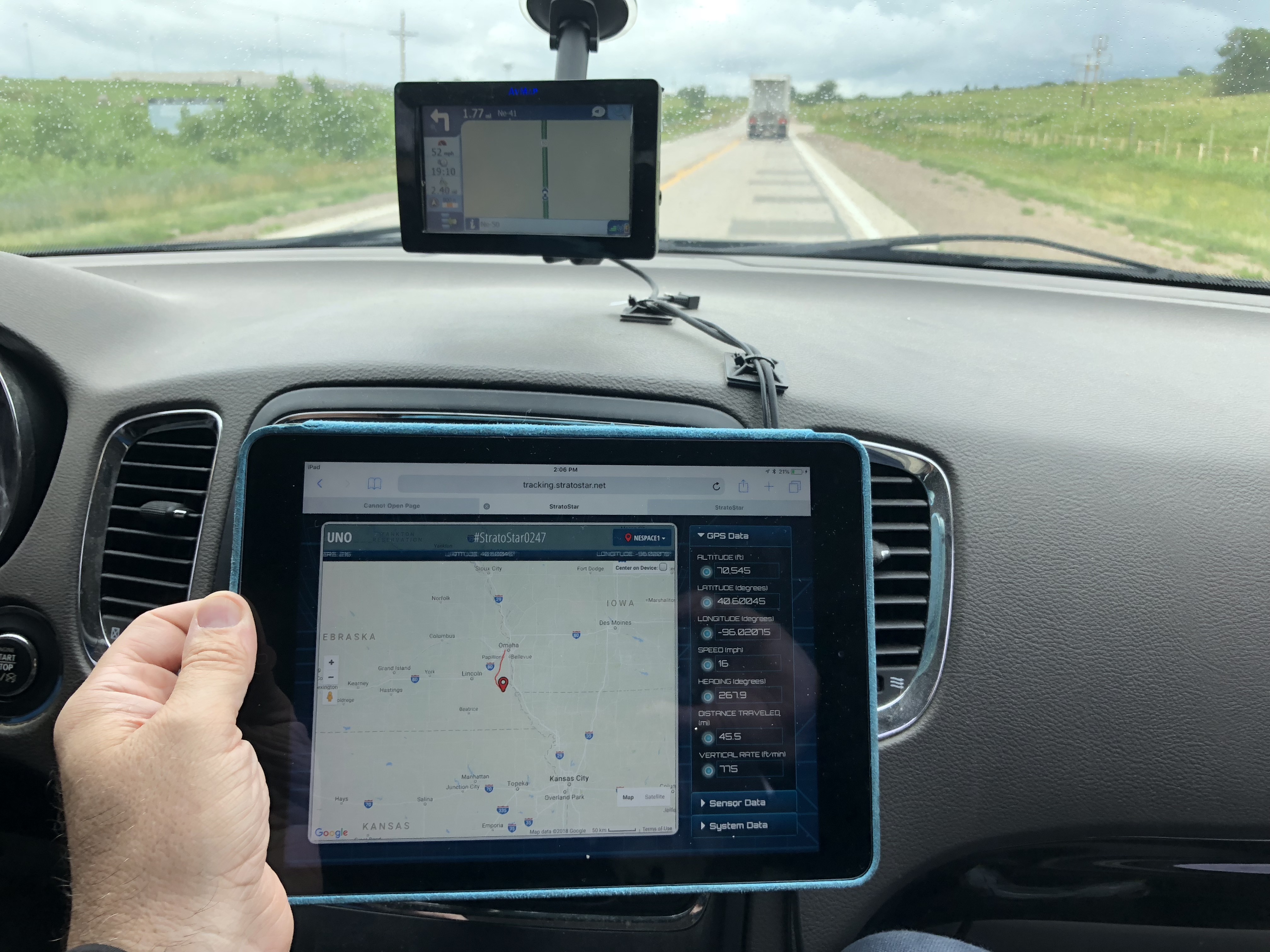
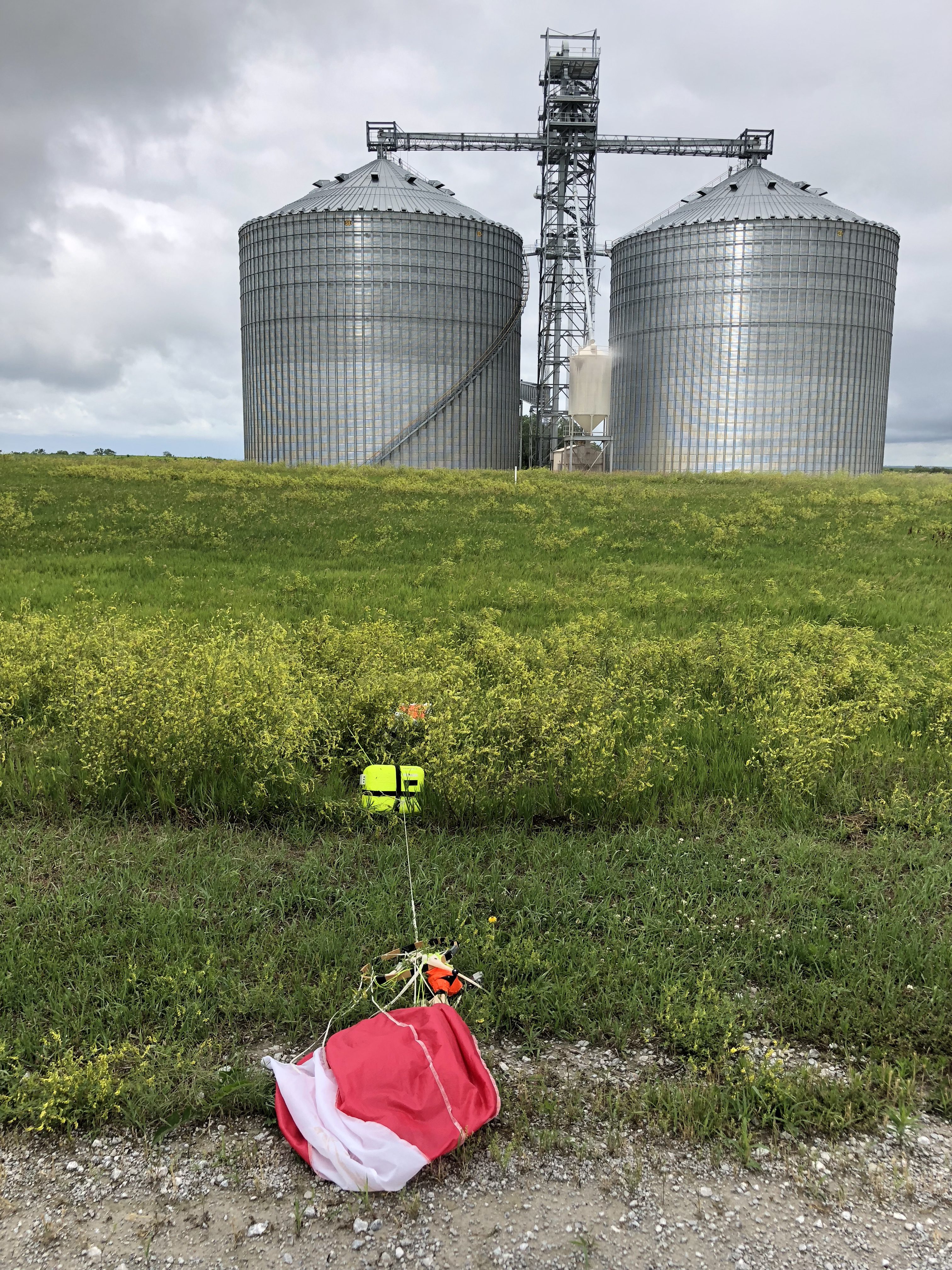
There were some interesting results with some of the payloads.
The Flaming Cheetos were vacuum-packed, not before the flight, but because of the near vacuum conditions in near space.

An experiment was cushioned by pom poms. 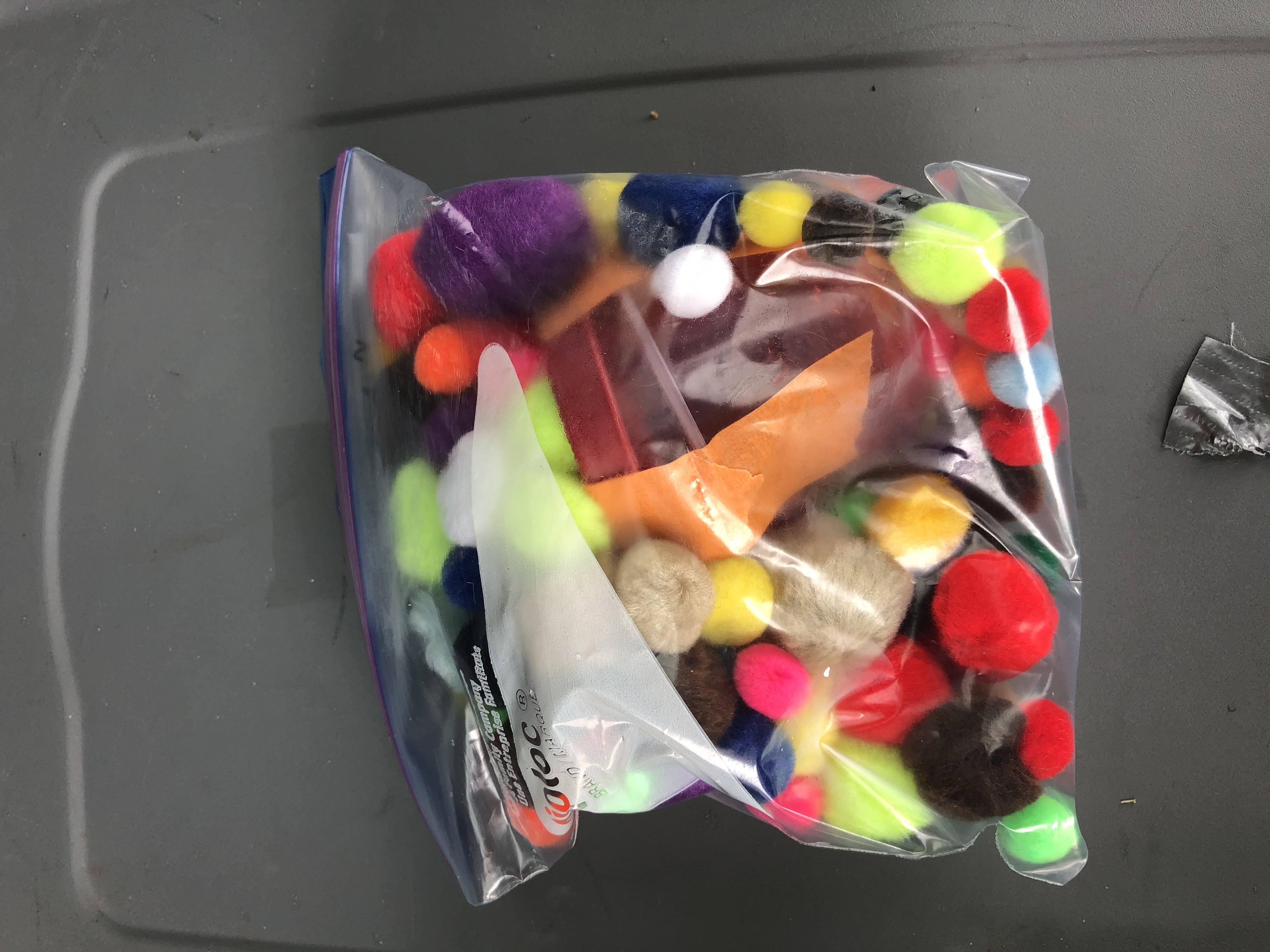
Liquid Jello set up on the flight.
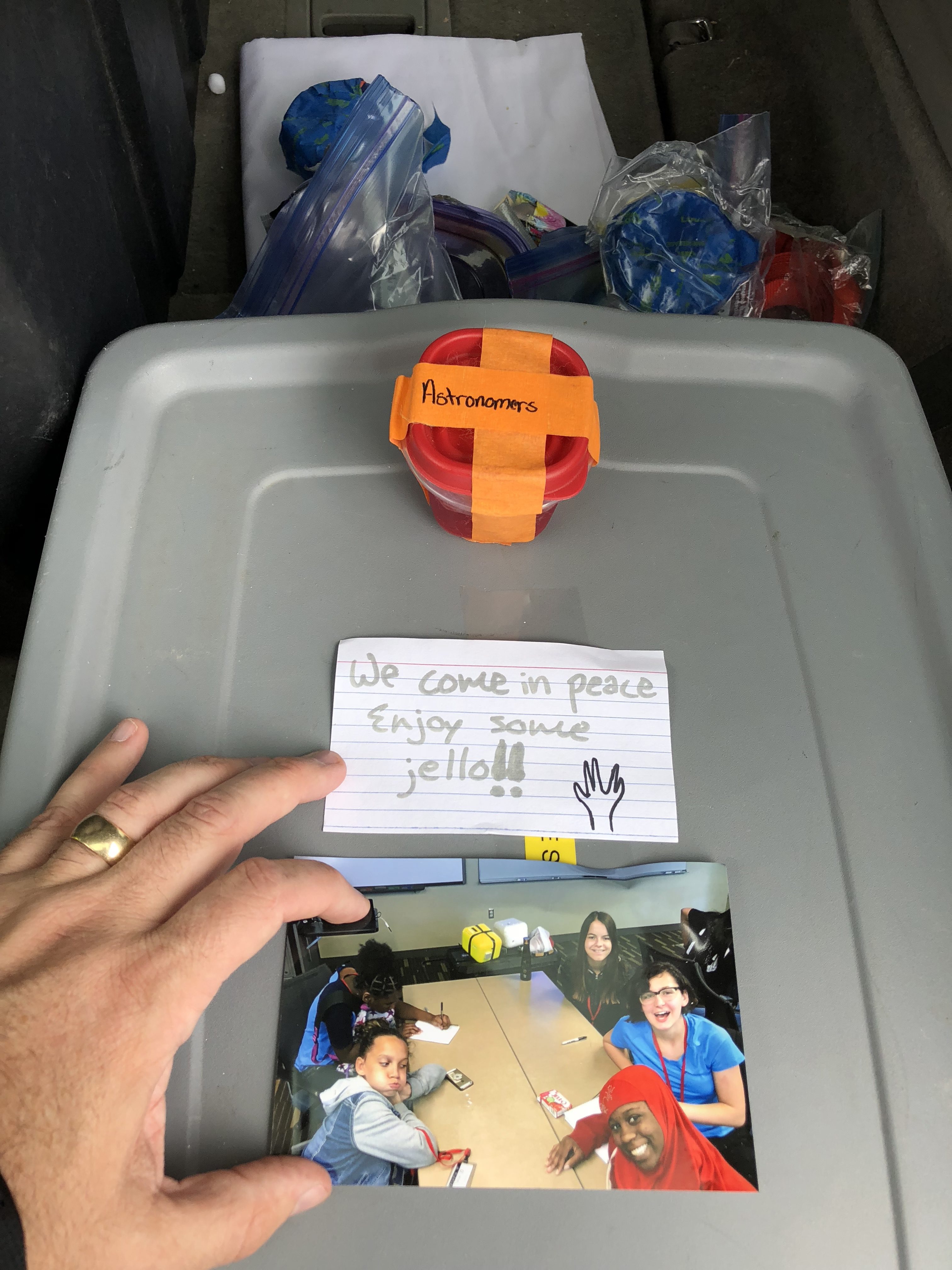
From the on-board computer, our maximum altitude was 30,804.1 m or 101,037 ft. The distance traveled was 58.6 miles. The satellite flight data can be found here: http://tracking.stratostar.net/mission/0247
A video including images and video from the GoPro camera on the balloon can be seen here:
Once again, we were proud to help with the EUREKA STEM camp. Thanks to the campers for participating and the UNO-STEM team to bring them this experience.
